Basque meals is without doubt one of the most iconic regional cuisines in Spain—and the world. When you’re questioning the place it comes from, what it’s, or tips on how to make it, you’re in the fitting place!
Under I’ll share the secrets and techniques of Basque meals tradition and historical past, plus a few of my favourite recipes to recreate it at house.
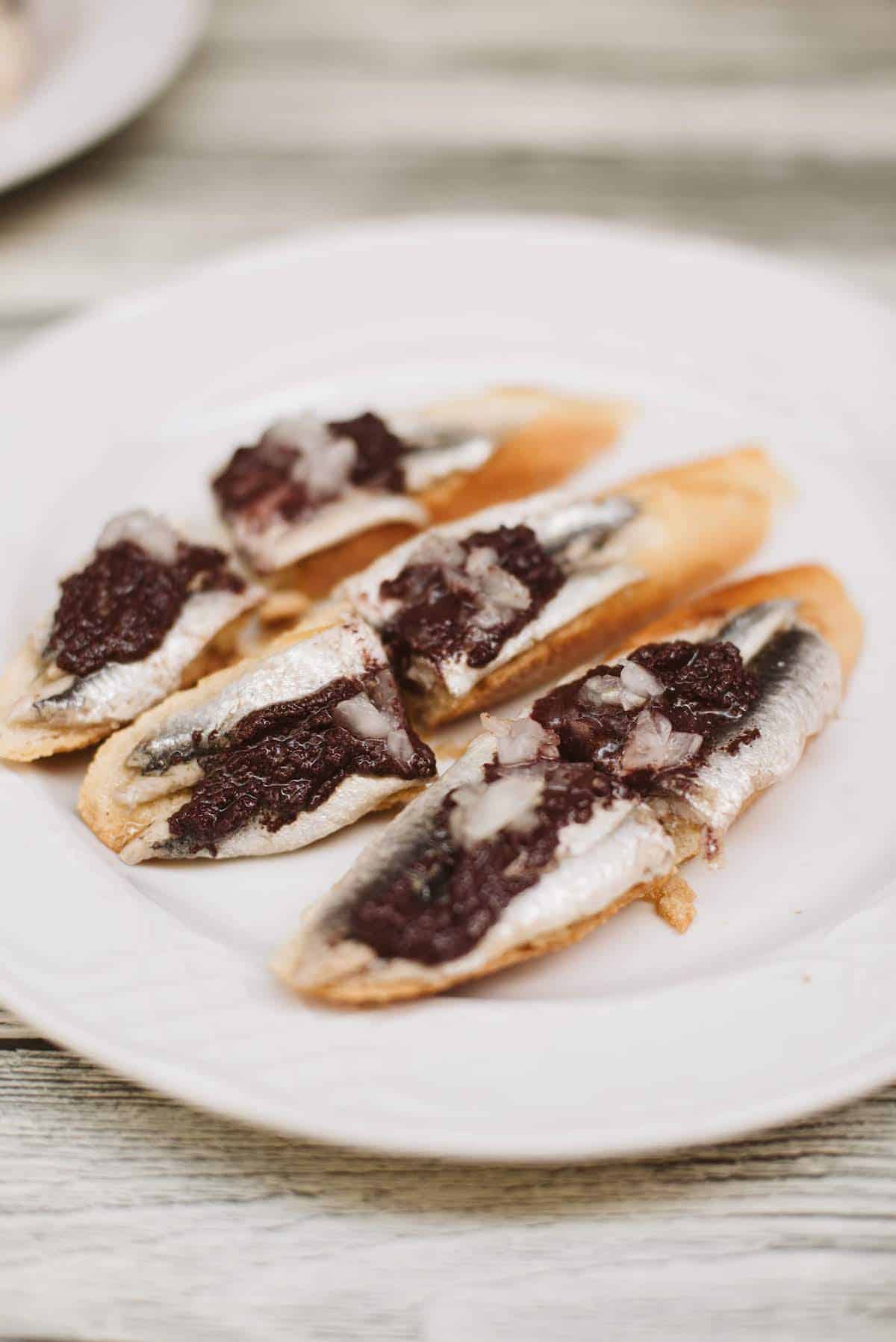
For me, journey is all about meals. So it’s no marvel that on my many journeys to the Basque Nation, I’ve made it some extent to hunt out one of the best native dishes, eating places, and bars, from San Sebastian to Bilbao and past.
Alongside the way in which, I’ve realized loads in regards to the extremely distinctive tradition of this area, and the way that tradition is mirrored in its delicacies. There’s one thing particular about the way in which individuals prepare dinner right here, with native substances and time-tested recipes. They reveal not solely admirable culinary experience but additionally immense satisfaction for native traditions and historical past.
The Basque Nation itself could also be small, however its world status is big.
It has one of many highest concentrations of Michelin-starred eating places per capita on the planet and extra well-known cooks than you may rely. Regardless of all this worldwide recognition, nevertheless, the area has saved its distinctive id—and inimitable flavors—intact.
Historical past of Basque Meals
The Basque Nation (Euskadi in Basque or País Vasco in Spanish) is situated alongside the northern coast of Spain and its border with France (the area additionally extends into southwestern France, however right here I’ll focus primarily on the Spanish half).
The Basque persons are one of many oldest surviving ethnic teams in Europe, predating even the Historic Romans.
A part of the thriller surrounding this tradition is because of its language, Euskera. It’s a linguistic isolate, that means it’s not associated to every other languages—not like Spanish, French, and different regional languages like Catalan, which all belong to the Indo-European language household.
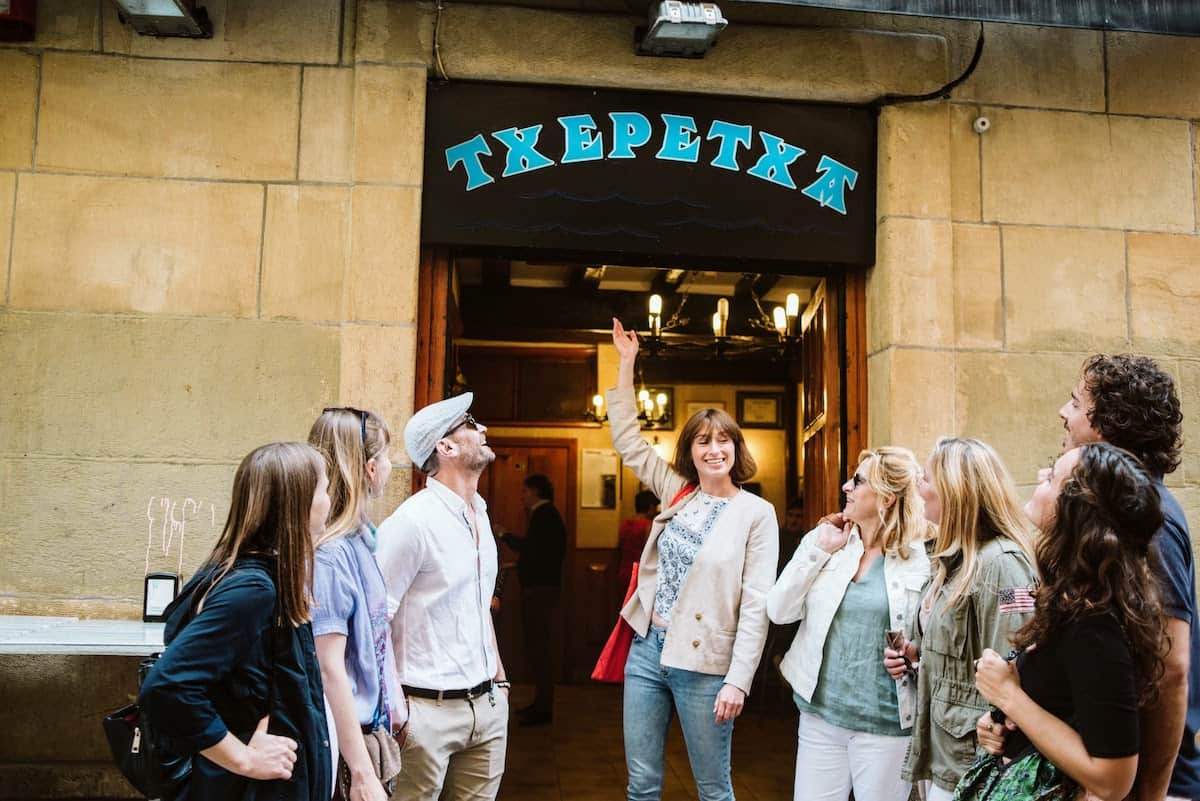
A part of the explanation why Euskera has survived for thus lengthy is that the Basque Nation is geographically remoted, surrounded by mountainous terrain and the ocean. This explains why many points of Basque tradition, together with meals, are so completely different from the remainder of Spain.
The Evolution of Basque Delicacies
Within the Center Ages, the Basque individuals had a humble weight loss program of domestically grown grains, legumes, and fruit. Over time they began to devour extra seafood, and after the colonization of the Americas, they started to combine meals like corn, tomatoes, and peppers into their cooking.
Throughout the Industrial Revolution, Basque delicacies was closely influenced by French cooks. It didn’t develop a lot throughout the Franco regime (1939–1975), because the dictatorship sought to erase the distinctive tradition that distinguished Basque individuals from Spaniards. However as soon as democracy was established within the Nineteen Seventies, a brand new period of innovation started.
New Basque Delicacies
New Basque Delicacies, or Nueva Cocina Vasca, was pioneered by cooks Juan Mari Arzak and Pedro Subijana starting within the late Nineteen Seventies. They mixed inspiration from French Nouvelle Delicacies with native substances and traditions, making a culinary motion that put the Basque Nation on the gastronomic map.
When you’ve ever heard of molecular gastronomy, you’re accustomed to the fashion of New Basque Delicacies. The inventive ideas and strategies developed by Basque cooks have conquered the world, and as we speak their affect may be felt far past this comparatively small area of Spain.
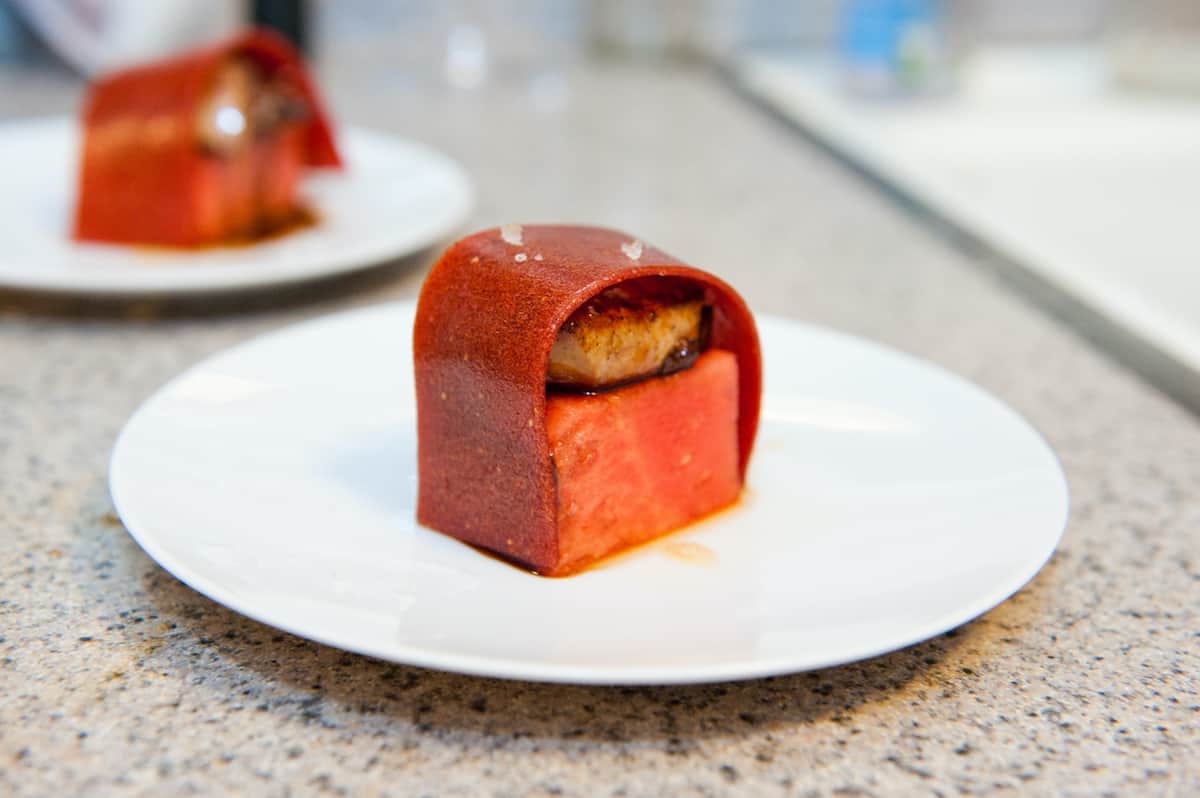
However regardless of its worldwide status, Basque delicacies stays true to its roots. Visiting the Basque Nation may imply consuming Michelin-starred creations whereas standing shoulder-to-shoulder with locals in a crowded bar, selecting pintxos off the counter to pile in your plate, or digging into hearty dishes which might be a far cry from the minimalistic masterpieces of Arzak or Mugaritz.
Well-known Basque Cooks
I’ve already talked about the founders of New Basque Delicacies, Juan Mari Arzak and Pedro Subijana, however they’re not the one culinary superstars hailing from the Basque nation. Martín Berasategui and Eneko Atxa are additionally virtually family names (should you reside in a food-obsessed home, anyway).
These 4 cooks, along with Karlos Arguiñano, Hilario Arbelaitz, and Andoni Luis Aduriz, based the Basque Culinary Middle in San Sebastian, which mixes prime coaching packages with a middle for analysis and innovation. These cooks and lots of others collaborate so as to advance and protect Basque delicacies.
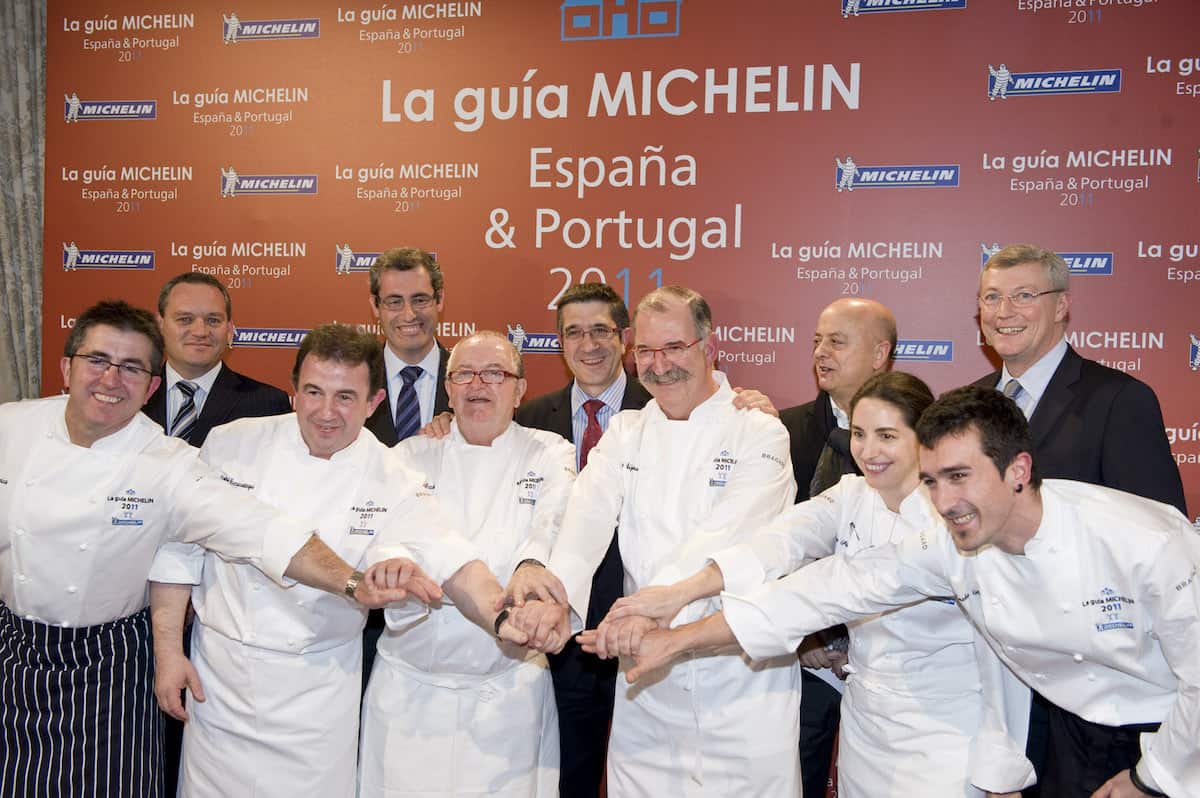
A New Era of Innovation
In recent times, different Basque cooks have additionally gained worldwide consideration. Elena Arzak, Juan Mari Arzak’s daughter and co-head chef at their legendary household restaurant, has been acknowledged as one of many world’s finest cooks. And chef Josean Alija has made waves along with his avant-garde delicacies at Nerua, situated inside Bilbao’s Guggenheim Museum.
Native Basque Merchandise
Basque meals contains the whole lot from tuna stew and salt cod to burnt cheesecake and glowing cider. It’s a novel and eclectic delicacies—however one factor that each one Basque dishes have in frequent is domestically sourced substances.
The Basque Nation is house to a number of distinctive merchandise. A lot of them come from the close by shoreline; domestically caught tuna, shellfish, anchovies, squid, and different sorts of seafood determine prominently on most menus. Meat can be frequent—particularly the well-known cured ham, jambon de Bayonne (which comes from the Bayonne area of Basque France).
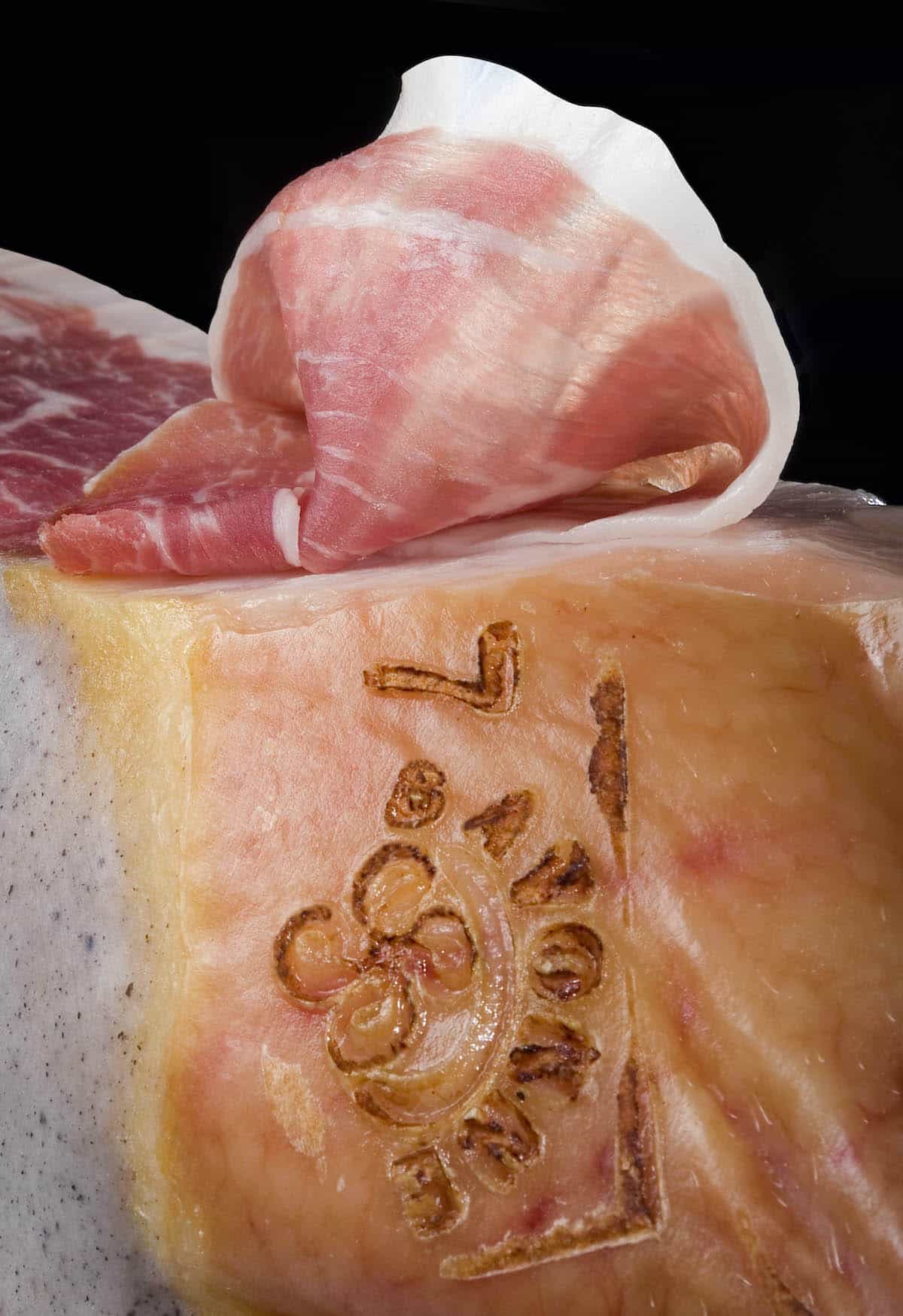
Plenty of native recipes depend on seasonal produce like peppers, potatoes, and cherries. The Espelette pepper is so integral to Basque delicacies that it has its personal competition, held within the French city of Espelette every October.
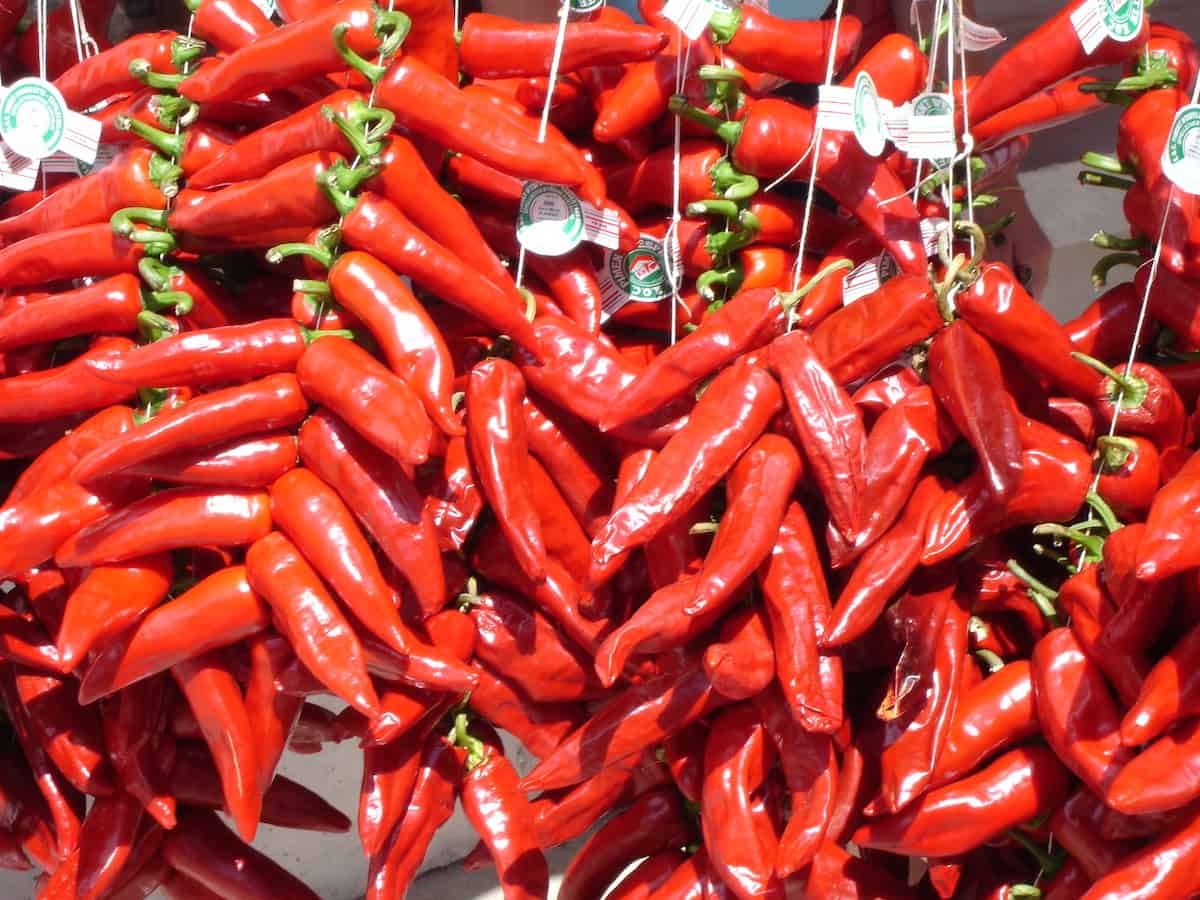
Lastly, there’s the long-lasting Idiazabal cheese. This wealthy and smoky cheese is constructed from unpasteurized sheep’s milk and named after the city of Idiazabal in Gipuzkoa. I’ll always remember my first chunk of the impossibly creamy Idiazabal risotto at Borda Berri in San Sebastian.
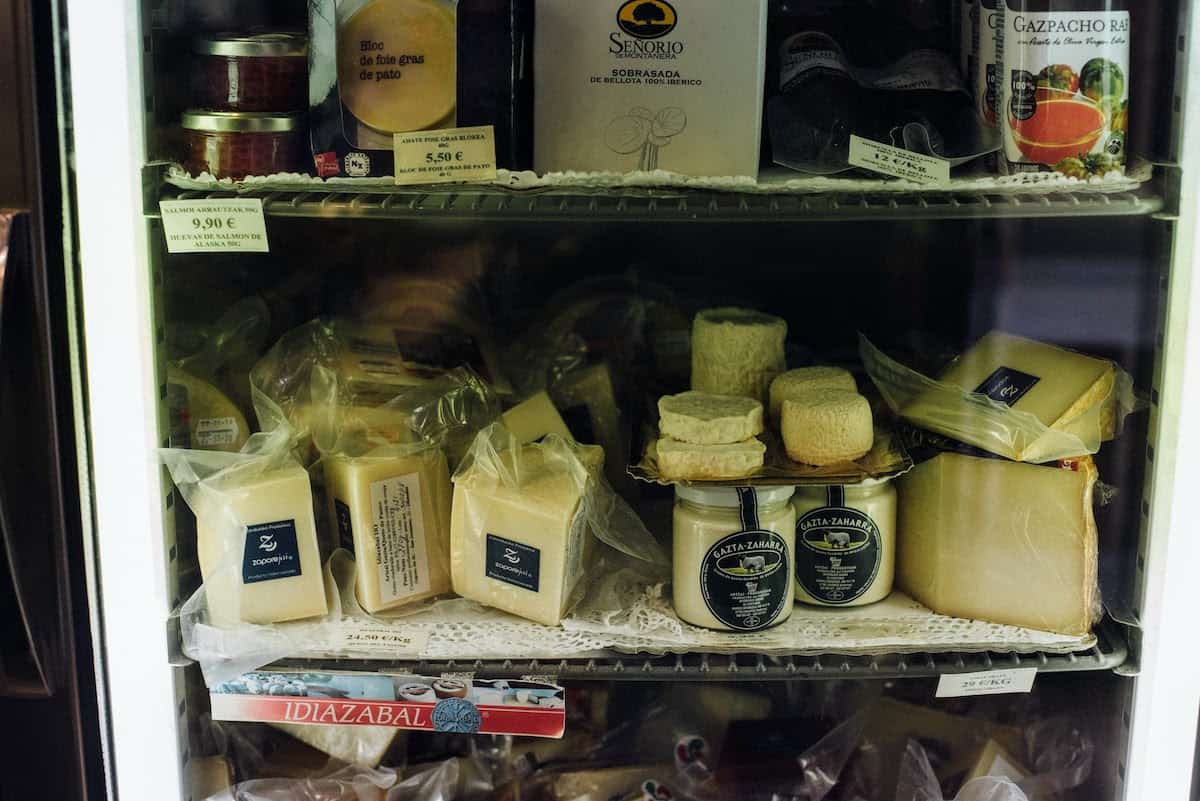
Conventional Basque Dishes
The high-quality native merchandise of the Basque Nation are integral to its most well-known dishes. To begin with, there’s marmitako, a stew that mixes tuna with potatoes, peppers, tomatoes, and a splash of txakoli—make it at house with this simple marmitako recipe.
Different seafood specialties embrace kokotxas (hake cheeks), bacalao a la Vizcaína (cod in a crimson pepper sauce), bacalao al pil pil (cod cooked in olive oil and garlic), merluza en salsa verde (hake in inexperienced sauce), txipirones (child squid cooked in squid ink), ttoro (fish stew), angulas (child eels), percebes (goose barnacles), txangurro (spider crab), and lots of, many others.
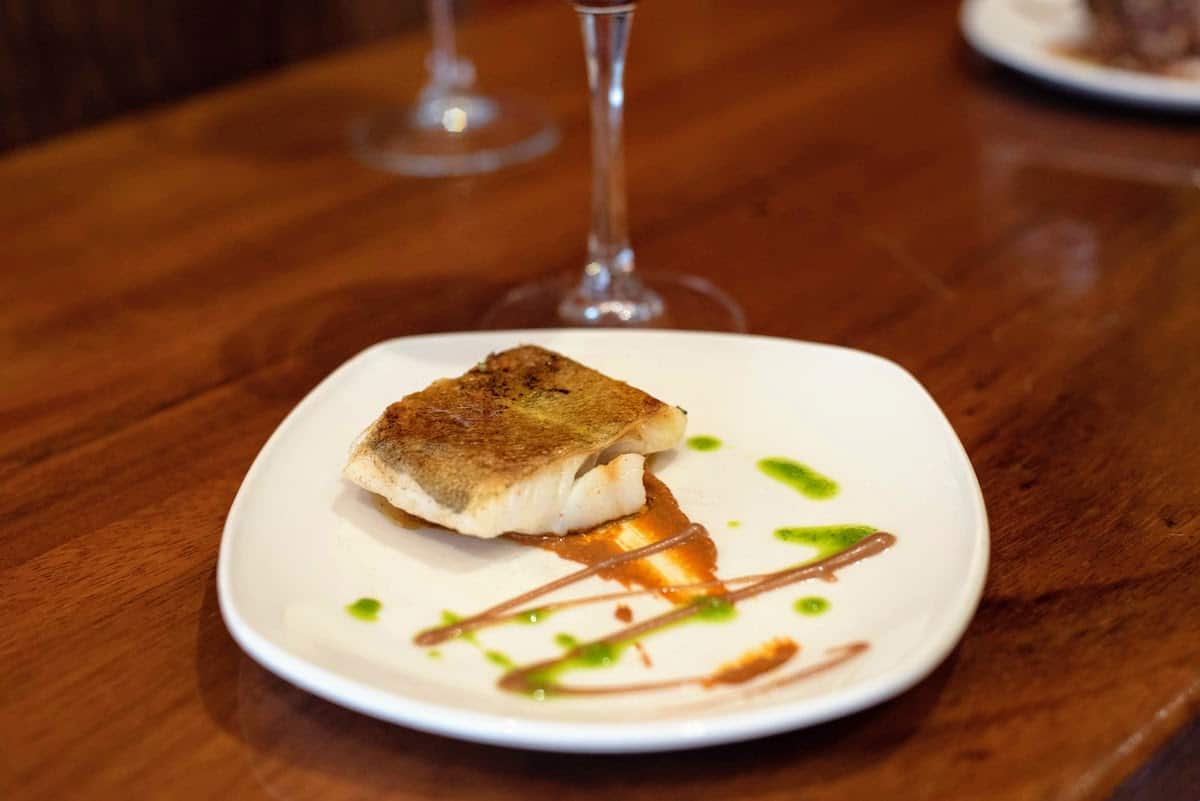
Aside from seafood, there’s pollo al chilindrón (hen stew with peppers, tomatoes, and cured ham), alubias de Tolosa (black beans with onion, pepper, pork, and blood sausage), and lamb stew. Noticing a sample? Heat, hearty dishes are undoubtedly a staple of Basque delicacies.
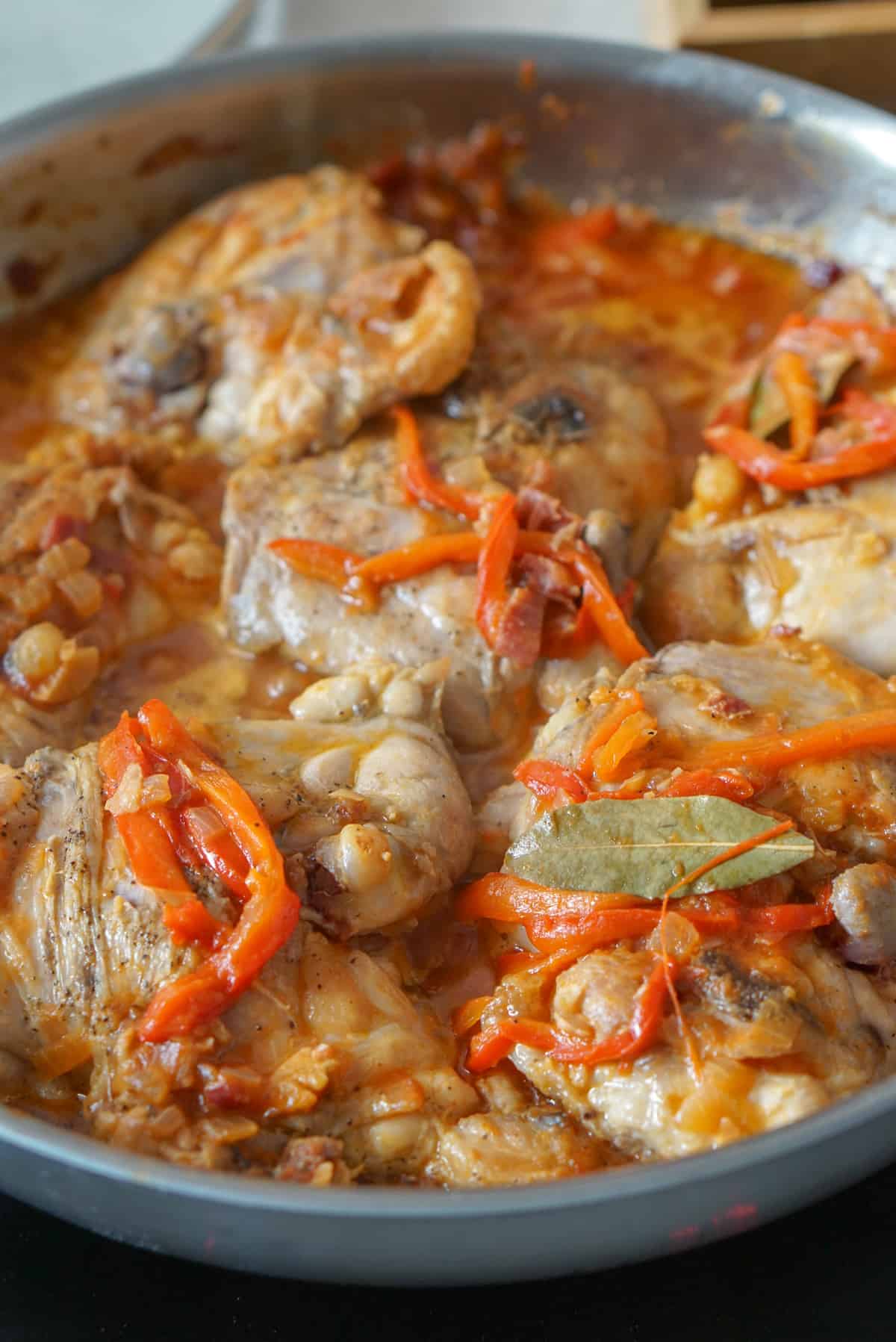
Nonetheless, a few of the most recognizable native specialties are precisely the alternative. Pintxos (spelled pinchos in Spanish) are small plates that mean you can strive a little bit of the whole lot, as an alternative of filling up on only one dish. They are often sizzling or chilly, ready to order or pre-made… however they’re at all times scrumptious.
In your option to the Basque Nation? Do not miss our information on the place to eat in San Sebastian.
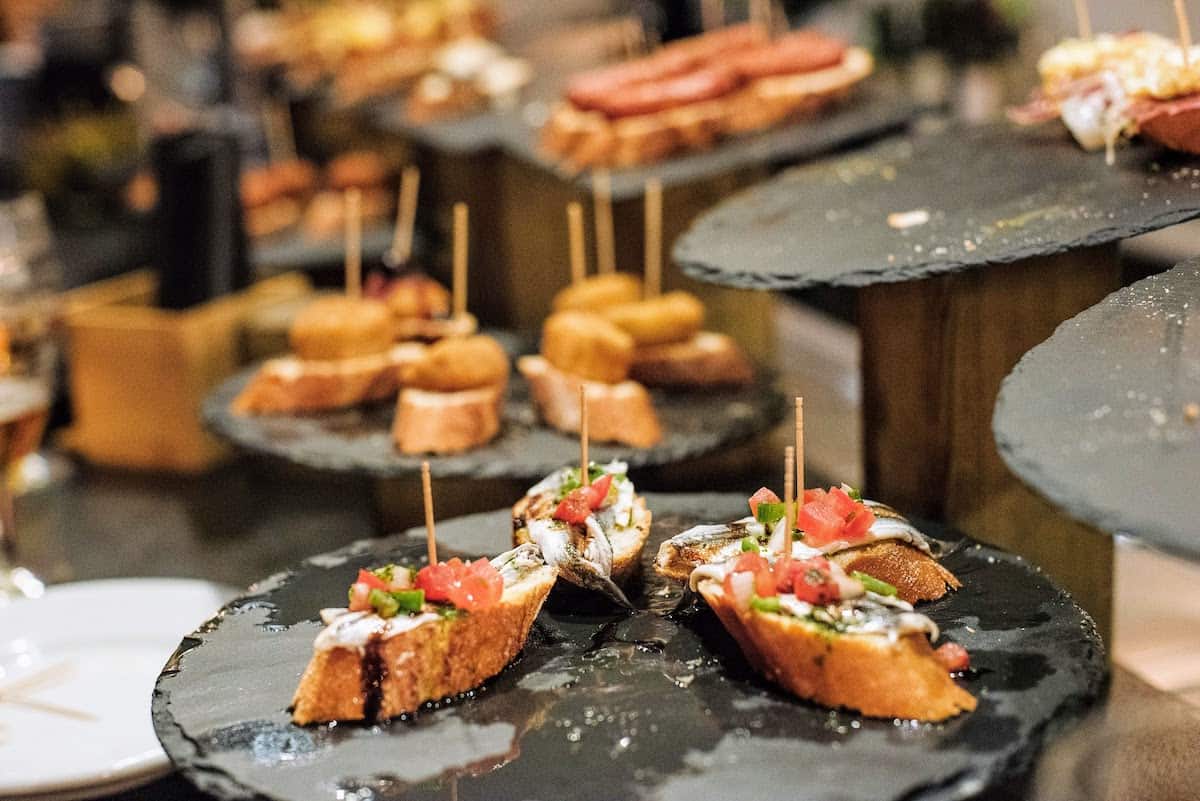
Well-known Basque Desserts
Lastly, there’s the great world of Basque desserts. Essentially the most legendary is burnt Basque cheesecake, which has change into a pop-culture phenomenon due to some high-profile reward.
However there’s extra to Basque sweets than cheesecake; take Gâteau Basque, a custard-filled cake with a pastry crust, or mamia, product of curdled sheep’s milk (it’s higher than it sounds).

Common Basque Recipes
Each food-obsessed traveler ought to put the Basque Nation on the prime of their checklist. However when journey isn’t an choice, recreating Basque delicacies at house is the subsequent neatest thing. And though this area is house to a few of the world’s prime cooks, its finest recipes are refreshingly easy.
Let’s begin with pintxos: the last word occasion meals. To take advantage of primary model, all you want is a few sliced bread, toothpicks, and no matter you wish to placed on prime. When you want some inspiration, try our round-up of one of the best pintxos recipes.
My private favourite pintxo? Something involving anchovies. I’m an particularly huge fan of gildas: small skewers of olives, peppers, and anchovies.
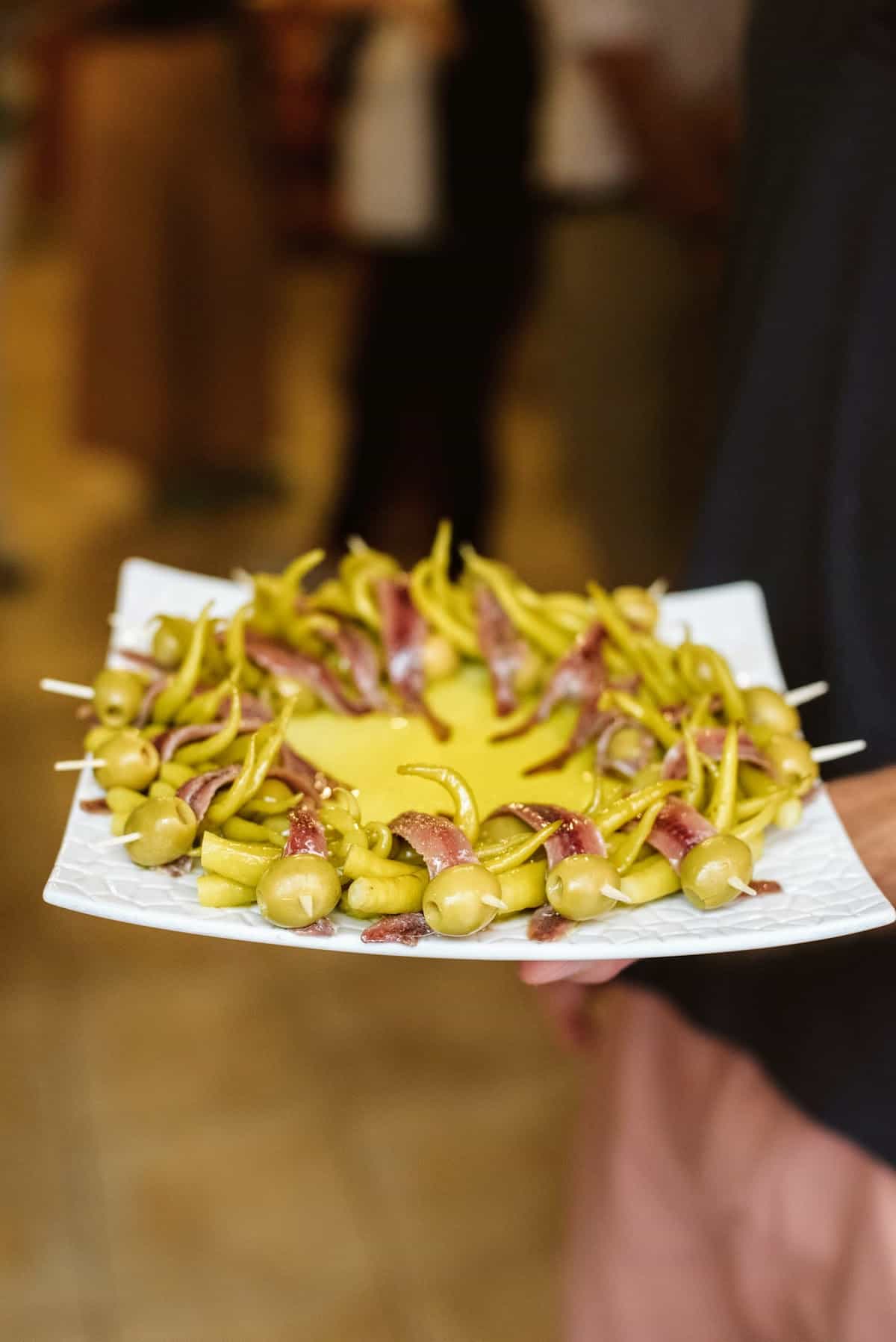
Past Pintxos
Different Basque-inspired snacks embrace salt cod croquettes and talos, a form of corn flatbread that’s fashionable all through northern Spain. And relating to primary programs, you may’t go unsuitable with marmitako or pollo al chilindrón.
You’ll be glad to know that essentially the most well-known Basque desserts are surprisingly simple to make! Try this tried-and-true recipe for burnt Basque cheesecake. Or for an equally indulgent deal with, strive making Gâteau Basque at house.
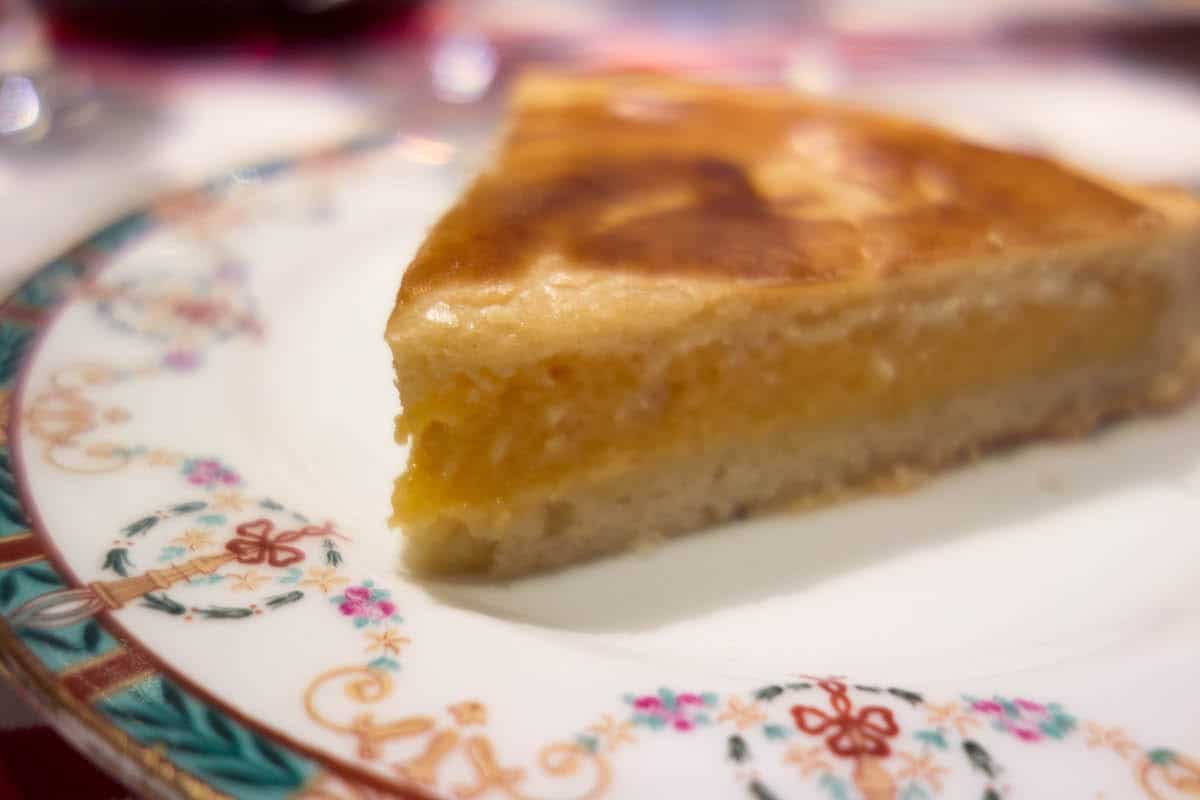
No matter you do, be certain to have a great bottle of Basque wine available to get pleasure from whilst you prepare dinner!
Basque Pintxos Tradition
I’ve already launched the idea of pintxos: small dishes that you simply’ll discover at bars all through the Basque Nation and the remainder of Spain. However these delicacies deserve a bit extra rationalization, as a result of they’re additionally linked to a few of the finest elements of Basque meals tradition.
The traditional pintxo consists of a small slice of bread with varied toppings, secured in place by a toothpick. They’re typically piled on the bar, prepared so that you can choose and select as you please. However don’t assume that that is the extent of your choices; most bars within the Basque Nation even have a menu of made-to-order pintxos which might be much more scrumptious.
Basque Bar Hopping
If the concept of a tapas crawl excites you, you’ll love txikiteo. That is the Basque custom of hopping from bar to bar, having just a few pintxos at every place accompanied by a txikito (small glass of wine), zurito (small beer), or one other drink.
It’s my private favourite option to get pleasure from Basque meals tradition, because it lets you strive a number of dishes and go to a number of locations in a single night time.
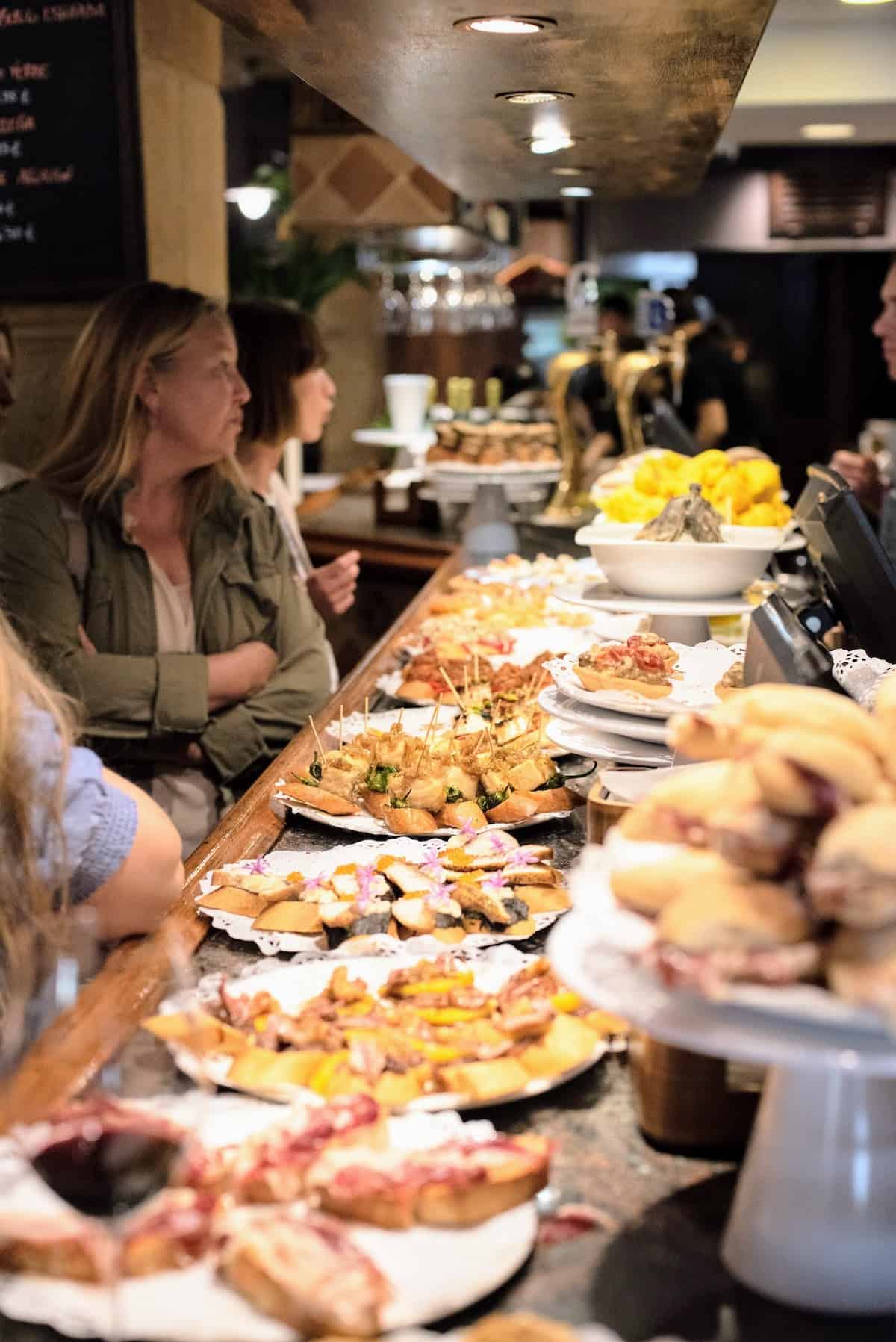
When you’re dreaming of a visit to the Basque Nation and wish to begin planning your txikiteo, try a few of the prime locations for pintxos in San Sebastian and our Bilbao pintxos information.
Basque Cider Homes
When you’re visiting northern Spain between January and Could, you completely can not depart with out going to a Basque cider home. Sagardotegia (Basque for “cider homes”) originated within the eleventh century as locations the place individuals would go to style every year’s batch of sidra.
Basque cider is crisp, tart, and a far cry from the sugary, alcoholic apple soda you’ll discover in most different international locations. At an genuine Basque cider home, you may nonetheless fill your glass within the conventional manner, straight from the faucets of massive picket barrels.
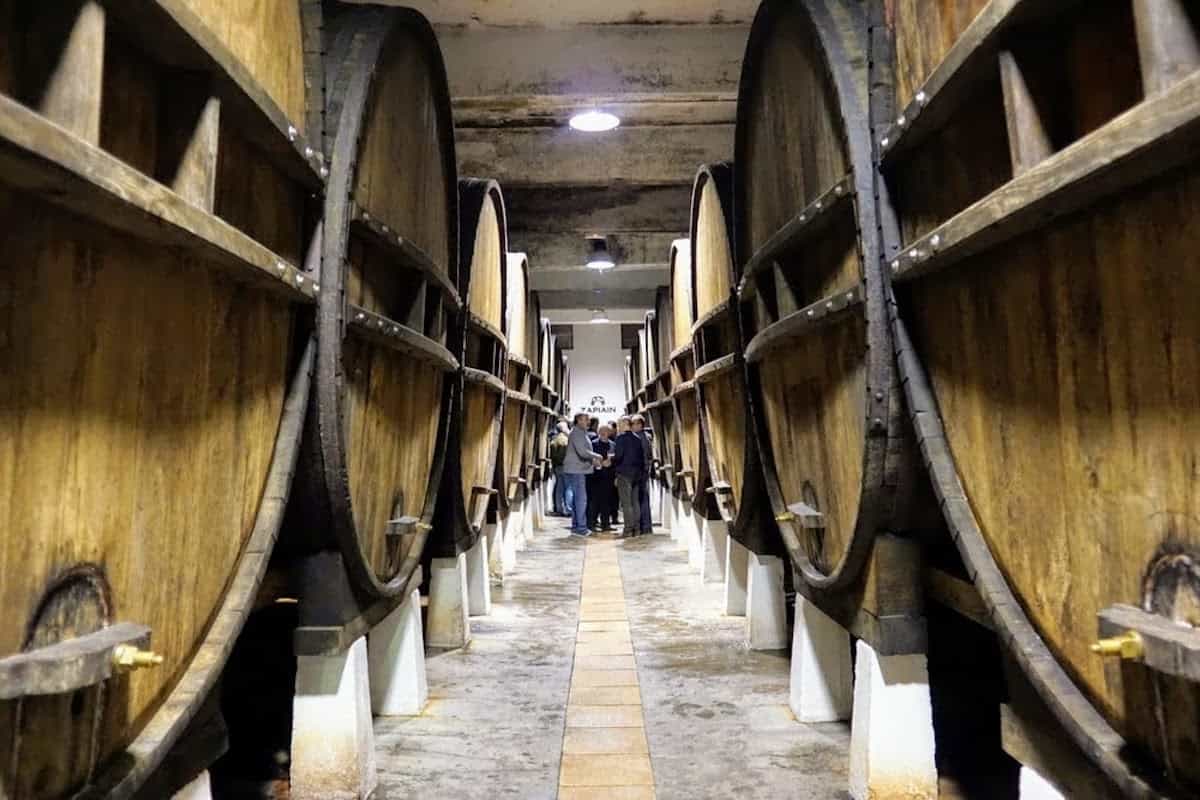
What’s on the Menu?
Basque cider homes are all about custom, and that extends to the meals. The menu is sort of at all times the identical: tortilla de bacalao (salt cod omelet), txuleta (an enormous T-bone steak cooked uncommon), and Idiazabal cheese with quince jelly and walnuts. Generally there’s additionally a course of codfish with peppers and onions.
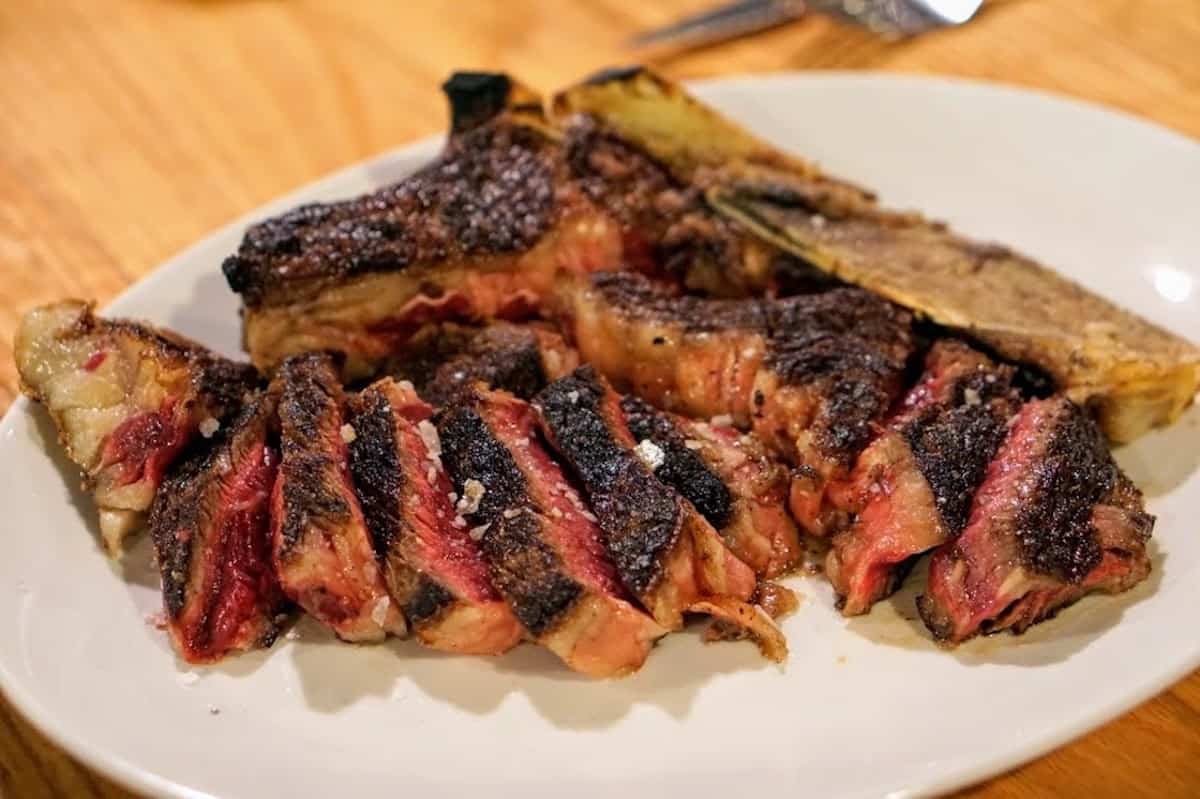
Regardless of this mouthwatering menu, it’s vital to level out that sagardotegia are not eating places. They’re extraordinarily casual and sometimes unheated—and don’t even take into consideration asking for any substitutions. It’s all a part of the Basque cider home expertise, so go in with an open thoughts (and an empty abdomen).
Basque Gastronomic Societies
Past the tourist-filled streets of Basque cities, there’s a secret world of locals-only havens the place meals reigns supreme. Basque gastronomic societies, or txokos, are century-old golf equipment that revolve round cooking. They’re locations for members to collect, socialize, and join by the preparation and pleasure of fine meals and drinks.
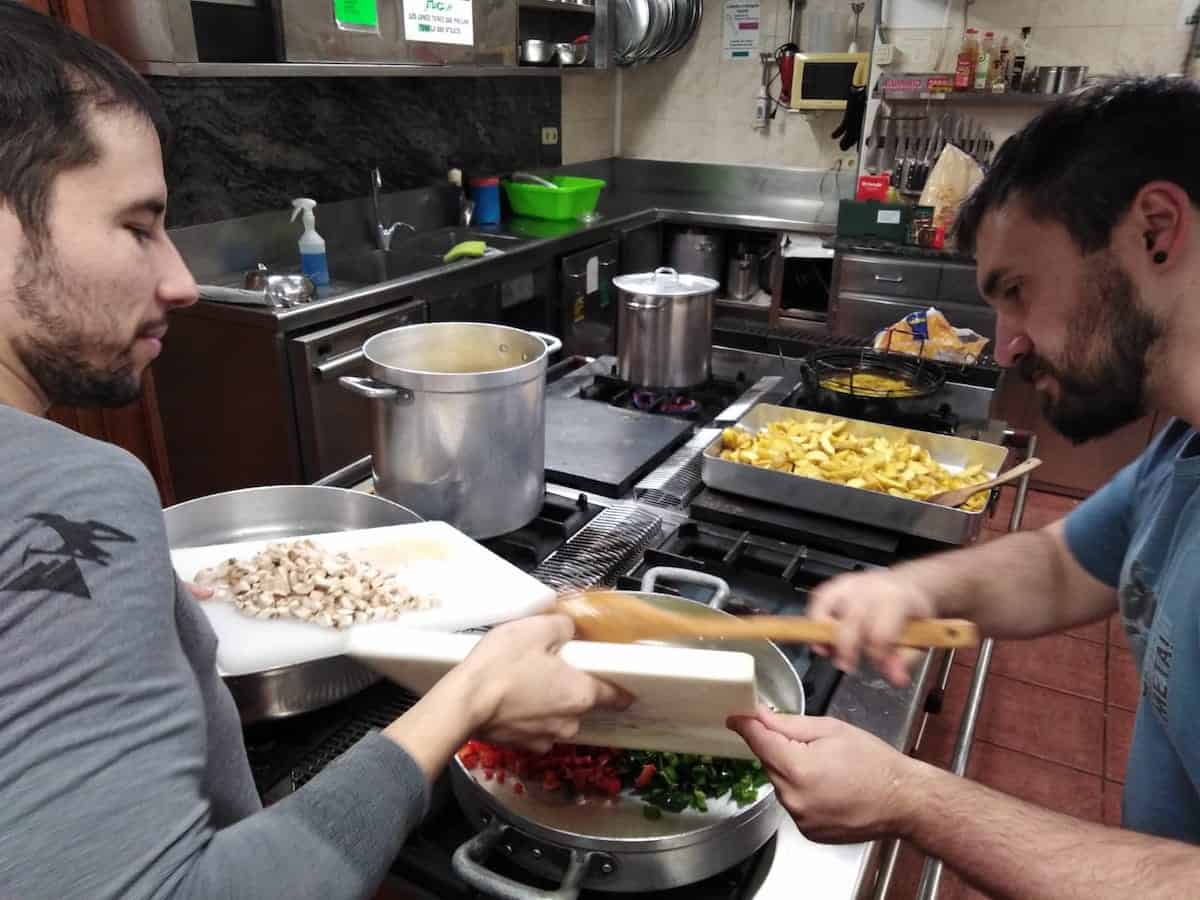
Txokos are historically solely open to males, though in recent times some have began to permit ladies to go to and even be a part of. They’re engaged in a continuing push-and-pull between the previous—which is integral to their id—and the long run. And so they’re inextricably linked to the present of culinary excellence that runs by the Basque Nation’s veins.
Basque Meals FAQs
Basque meals comes from the Basque Nation (Euskadi or País Vasco), which is a area of northern Spain (culturally talking, it additionally extends into France). It encompasses the provinces of Álava, Biscay, and Gipuzkoa, and the cities of Bilbao, San Sebastian, and Vitoria-Gasteiz, amongst others.
In some methods, you would possibly say pintxos are the Basque model of Spanish tapas: small dishes which might be typically meant to be shared. The principle distinction is that pintxos spotlight particular Basque merchandise, recipes, and traditions. The traditional model consists of a slice of bread with toppings mounted in place with a toothpick, however they arrive in many alternative varieties.
Basque meals displays the distinctive tradition and heritage of the Basque Nation, which is distinct from that of Spain. It depends on native merchandise which might be solely discovered within the area, like Idiazabal cheese and Espelette peppers. It additionally leans closely on seafood and stews.
The singular tradition surrounding Basque meals contains traditions like cider homes, txikiteo (pintxos bar hopping), and unique gastronomic societies, in addition to latest improvements by world-famous cooks who’ve spearheaded the molecular gastronomy motion.
It is determined by what you’re searching for! If you need good climate, go in the summertime, when you may totally benefit from the seashores and delightful pure environment. To keep away from the busier vacationer season, plan a visit for June or September. However if you wish to go to a Basque cider home, you’ll want to go to between January and Could.
When you’d wish to tour some wineries and possibly catch the San Sebastian Movie Competition, purpose for autumn. And if you wish to cozy up with some Basque cider and hearty meals, a winter escape is good—it’ll be chilly and wet, but additionally much less crowded!
Sure! To begin with, there’s Aste Nagusia, or Semana Grande, which takes place in Bilbao and San Sebastian in August. Though it’s not primarily a meals competition, this huge celebration contains gastronomic competitions the place you may style one of the best of the Basque Nation.
You’ll additionally discover a number of unimaginable native meals at San Sebastian’s Tamborrada, a vibrant drum competition held yearly on January 20.
There are a number of regional festivals centered round wine, such because the txakoli grape harvest competition that takes place in Zarautz in September. For a really distinctive expertise, attend the Batalla del Vino (Battle of Wine) in Haro, within the neighboring province of La Rioja.
When you’re extra into the theoretical facet of issues, try the San Sebastian Gastronomika convention, which options talks by well-known cooks and culinary specialists.
Hungry for extra? Join my free weekly publication and obtain a brand new Spanish recipe as soon as per week! Be part of as we speak and get my FREE Spanish ingredient necessities information!
